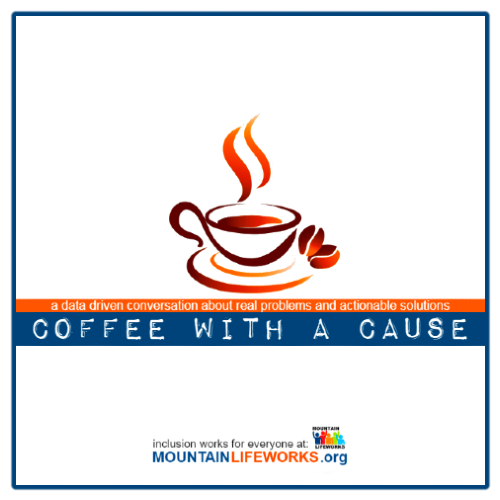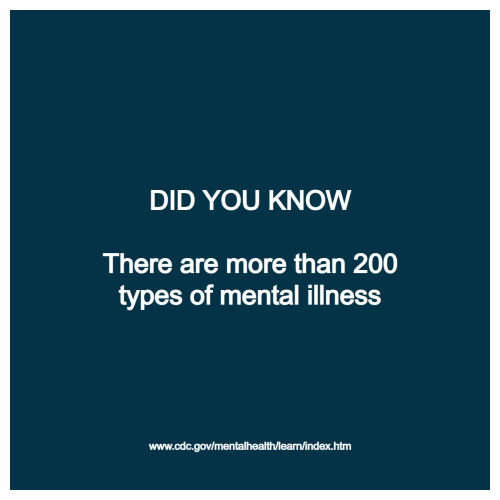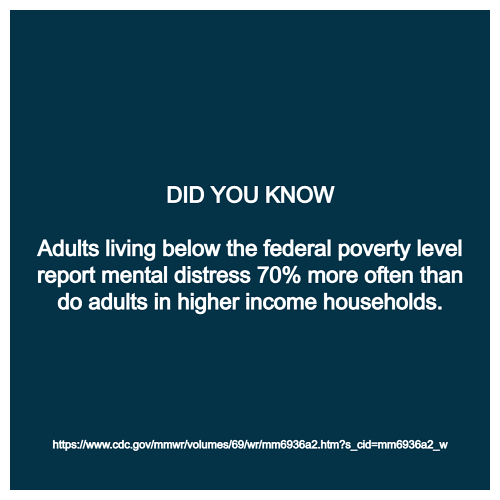
MAY 2024 mental health month
May is Mental Health Awareness Month. Data shows 1 in 5 adults suffer from Any Mental Illness (AMI) and less than half seek treatment. Any mental illness (AMI) is defined as a mental, behavioral, or emotional disorder. AMI can vary in impact, ranging from no impairment to mild, moderate, and even severe impairment from SMI. This definition is similar for disabilities and neurodiversity. Serious Mental Illness (SMI) impacts 1 in 20 adults and is defined as a mental, behavioral, or emotional disorder resulting in serious functional impairment, which substantially interferes with or limits one or more major life activities. The burden of mental illnesses is concentrated among those who experience disability due to SMI. Again the similar definitions should be noted.
According to the CDC there are over 200 diagnosable mental health conditions. Data shows 70% of adults who report serious mental distress live in households below poverty levels. Households with a member with a disability have higher poverty rates is in all 50 states compared to those without any disability. The poverty rate among working age adults (18-64) is 25% while only 9.3% among the non-disabled working age population. It isn't hard to see how higher under and unemployment rates combined with higher healthcare and caregiving costs result in higher poverty and depression rates among those with the SMI and other lifelong diagnosis. The CDC also reports poverty and depression as the two leading contributing factors in over 50% of all suicides.
Mental Health By the Numbers | NAMI
Mental Health and Behavior: MedlinePlus

Coffee with a Cause may 2024
Many mental health conditions are treatable with medication and traditional therapy. Many health insurance plans include mental health benefits. This makes it critical to distinguish between social and economic triggers among our most vulnerable and detecting serious mental illness to expedite the appropriate care. This can be done by a balanced approach that deploys meaningful employment and small business models from the bottom up to complement existing trickledown government systems and charity models. This balanced approach uses data and diagnostics to identify economic interventions and diversion strategies to disrupt poverty-depression links between chronic illness, disabilities, mental health conditions and neurodiversity.
Mental health professionals can detect and treat many mental illnesses with traditional therapies and medication. However, the CDC and others acknowledge not all can be addressed this way. Job loss, disability, homelessness, relationship difficulties, legal issues, financial problems, etc. are examples of social and economic conditions that can trigger or exacerbate mental illnesses like depression. Depression is a mental health condition the others are not. Different problems need different solutions. Distinguishing between triggers and treatments for co-occurring mental health conditions needs to be part of meaningful mental health solutions.
People with Disabilities | NAMI

Coffee with a Cause may 2024
Cognition is the leading category of
disability in
Disability & Health U.S. State Profile Data: Colorado | CDC
Disability and Health Data System Explore by Location | NCBDDD | CDC
Mental health systems, charities and professionals all benefit from a more balanced approach. The current trickledown model is designed to ensure systems and providers can afford to sustain themselves first in order to provide services paid for by the remaining government funding and charity resources. This means those budgets and donations need to keep pace with inflation first to provide the same services and support. This fails to account for increasing numbers suffering due to the same inflation. This means they need to do more than just keep up with inflation rates… but catch up to the increasing suffering and demand caused by inflation. Regardless of how much those systems pay their staff they cannot take more patients when rosters are full. The answer is a balanced approach enabling greater access among these vulnerable groups to private insurance via the exchanges supported driven by merit-based employment and entrepreneurship. This relieves burdens on already stressed systems while expanding qualified options and access to second opinions that improve accurate diagnosis, outcomes and accountability from the bottom up.
ColoradoStateFactSheet.pdf (nami.org)
Remember a balanced approach uses verified data to identify problems and to propose actionable solutions. Only those willing to have difficult conversations can solve difficult problems. The first step to solving any problem is accepting the data indicating a problem... not blaming the messenger or method of delivery.
So join us for Coffee with a Cause and let's keep the conversation going each month with more data and actionable real life solutions!